PROTECT YOUR DNA WITH QUANTUM TECHNOLOGY
Orgo-Life the new way to the future Advertising by AdpathwayKithulgala is where I decided to give back to society, donating copious amounts of blood to the starving local leech population. While I did not receive a Nobel Prize for my efforts, I like to think it was appreciated nevertheless.
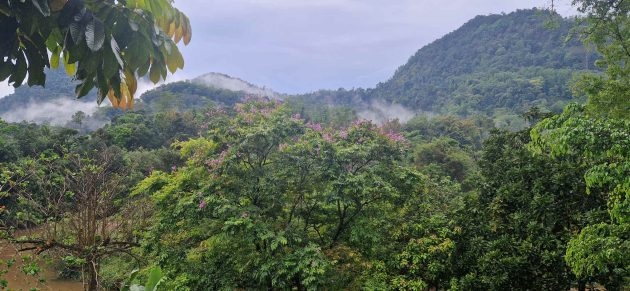
And it was worth it, given the number of interesting bird species in the area.
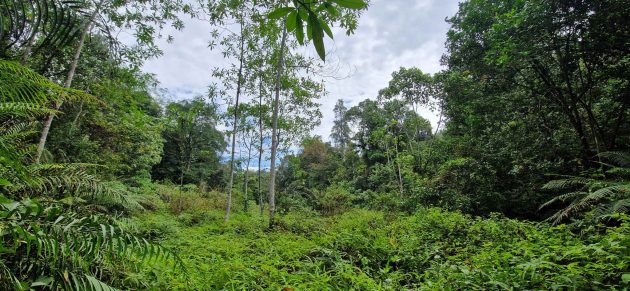
Many of these are Sri Lanka endemics, and my favorite among these is the Serendib Scops Owl, which was also a protagonist in a recent collaborative post on scops owls.
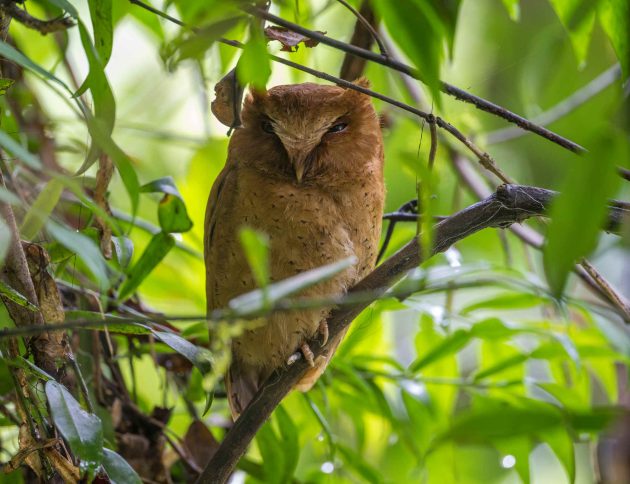
It is listed as Endangered and has a very small range – according to one estimate, the population is only about 150–700 individuals.
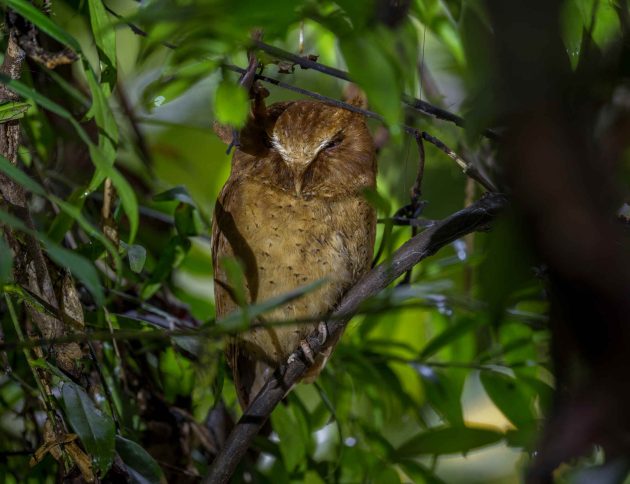
The owl is the first newly discovered bird species in more than a century – it was only seen in 2001 and scientifically described in 2004.
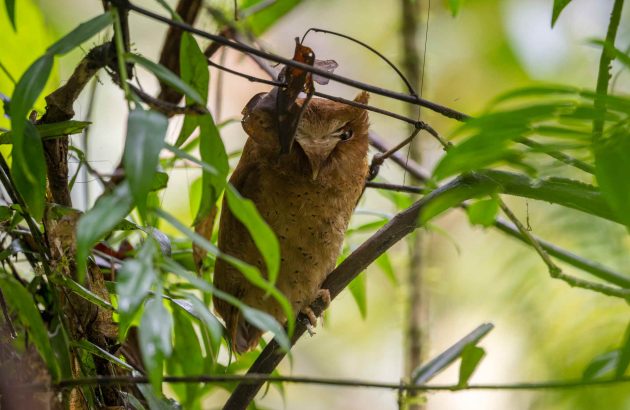
To celebrate, the Sri Lankan government even put the Serendib Scops Owl on a banknote. I just wish it were a bigger denomination than 20 Rupees – a value less than 7 US cents does not really do the bird justice.
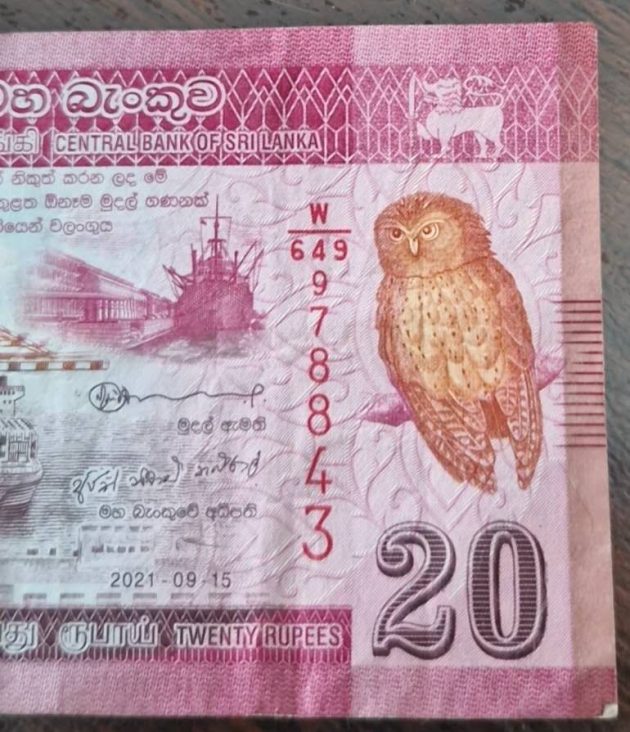
The other thing not so cool about this species is its scientific name, Otus thilohoffmanni, apparently honoring Thilo Walter Hoffmann (1922-2014), a Swiss agricultural scientist, long resident in Sri Lanka, and an ornithologist. Some of Elon Musk’s children probably have better names than this owl.
The Chestnut-backed Owlet is “only” listed as Near Threatened, with a population estimated at 15,000 to 30,000.
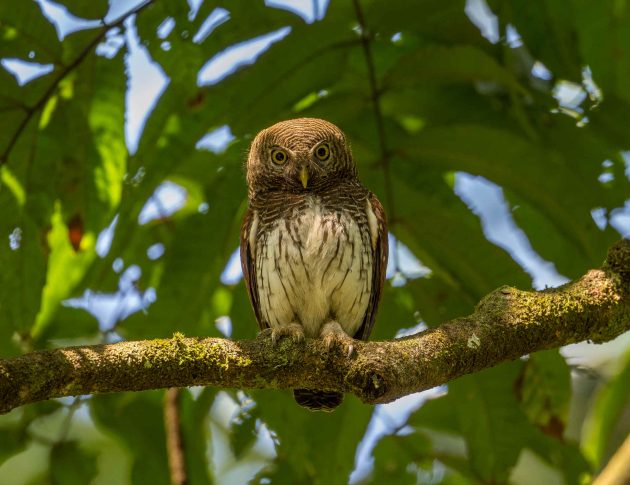
Given that this is a small owl with only a short entry in the HBW, it is surprising that said entry was authored by a total of 10 authors – maybe each of them contributed one sentence?
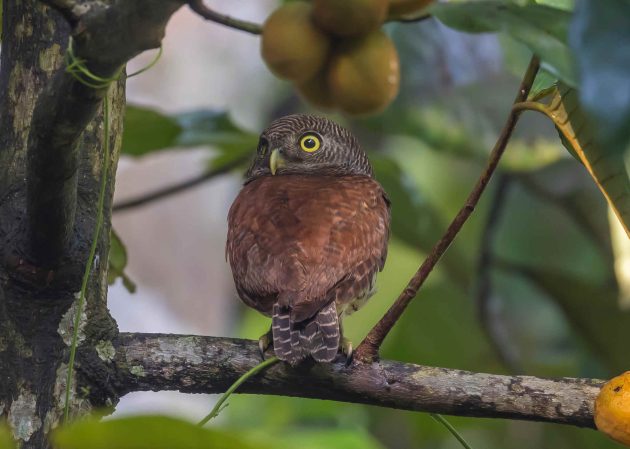
Strangely, the Peregrine Fund states that “Though the Chestnut-backed Owlet lives far away from Boise, Idaho, you can still learn a lot about owls with a visit to our Velma Morrison Interpretive Center at The Peregrine Fund headquarters.” And about how to direct Google Searches to your own website.
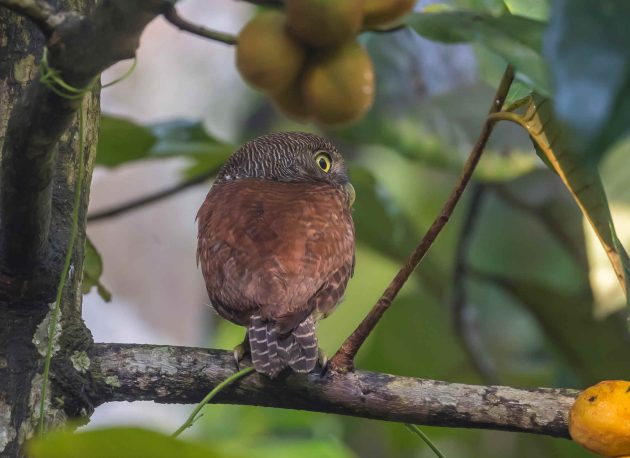
Taking photos of the Chestnut-backed Owlet got me into a sweat – after all, it lives in a humid and tropically hot environment. I was therefore surprised to read the Greenverz statement that the feathers of the owl “are soft and downy, providing excellent insulation against the cool, damp forests where it lives.”
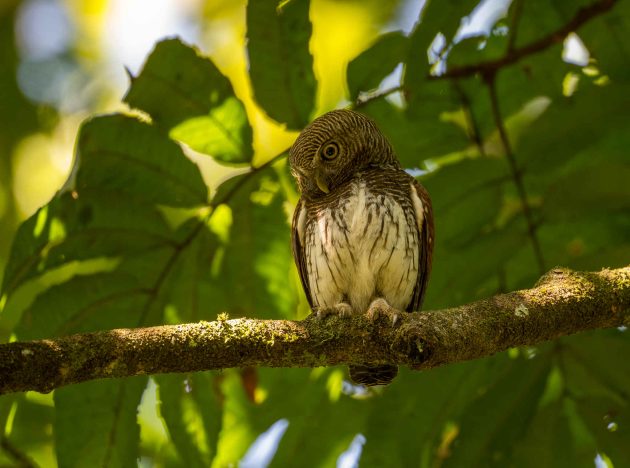
A website of the “Zoologists Association of University of Sri Jayewardenepura” has additional confusing information on the owl: “The species is often observed during the day, especially at night”.
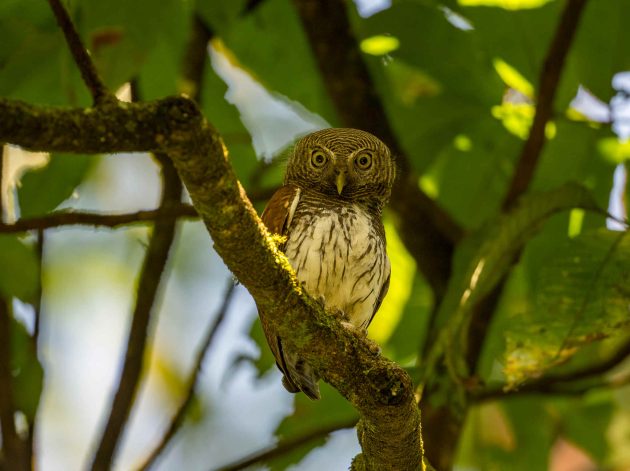
Coming back to the topic of banknotes (“Learning about finance and economics with 10,000 Birds”, a course providing essential financial literacy for otherwise clueless birders), the Orange-billed Babbler seems to rank higher in the Sri Lankan financial food chain, gracing the 100 Rupee note.
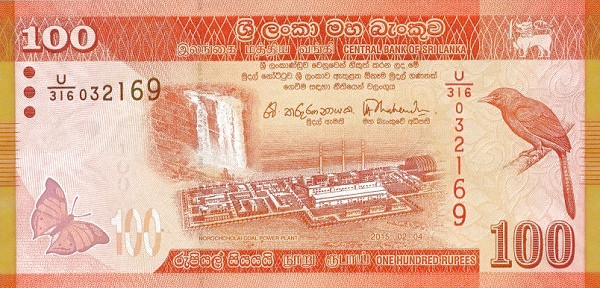
But the babbler still ranks below the Sri Lanka Hanging Parrot, at least from the perspective of banknotes – the parrot is on the 1000 Rupee note.
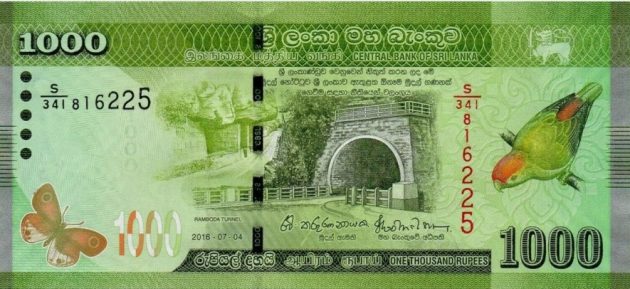
Sorry, that was too fast. We were not done with the Orange-billed Babbler yet.
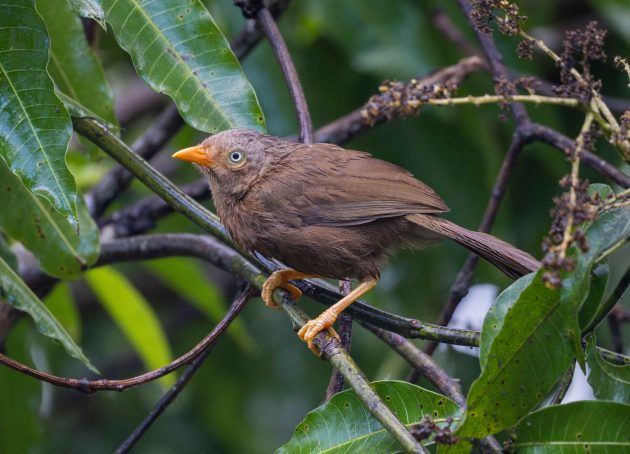
When looking up a species for the first time, I am always hoping for an interesting scientific name. Maybe after a person? Did that person have slaves? Rape midgets? Sell fentanyl?
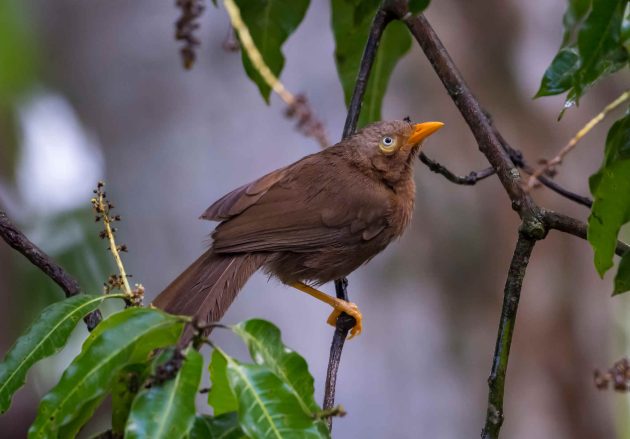
So, the scientific name of the Orange-billed Babbler, Argya rufescens, is quite a disappointment. Just stating that the bird is reddish (rufescens) does not give me anything to write about. So I have to start the tedious process of trying to find some research paper with interesting facts on the species – not boring details such as their size (25 cm) or clutch size (2-3 eggs).
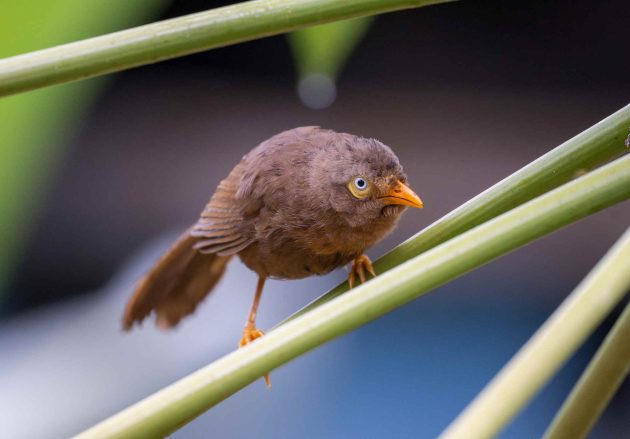
If I were to be reincarnated as an Orange-billed Babbler, I probably would not do too well, as the species is generally described as gregarious (which I am not). However, this makes it an ideal candidate as the leading species of mixed-species flocks in Sri Lanka (source).
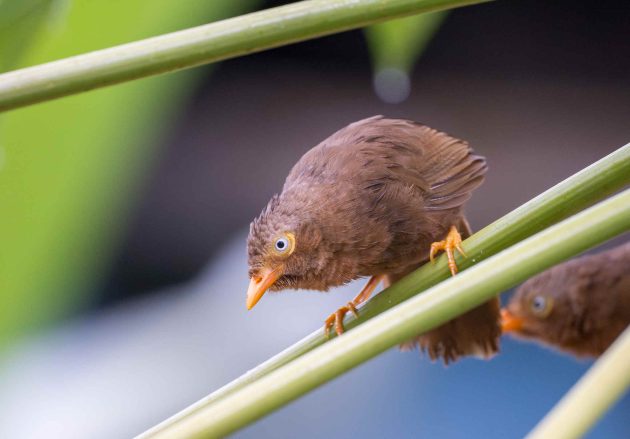
Ok, back to the 1000 Rupees bird, the Sri Lanka Hanging Parrot. Does the banknote shown above really have a berylline color, that is, a light blue-green shade? At least that is what the scientific name of the species, Loriculus beryllinus, implies.
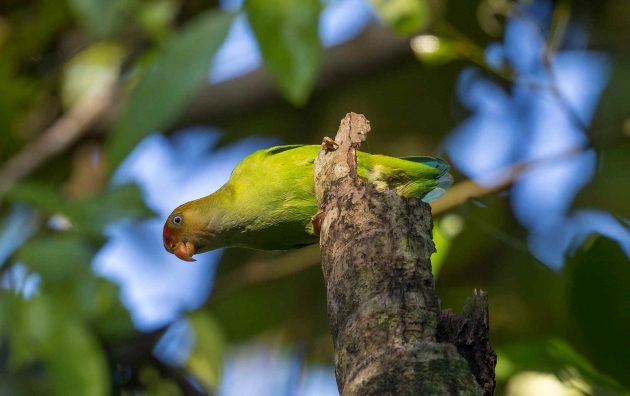
There are 15 species of Hanging Parrots (genus Loriculus) – their main claim to fame is the ability to sleep upside down. Sometimes it does not take much to be famous, as I recently discovered myself.
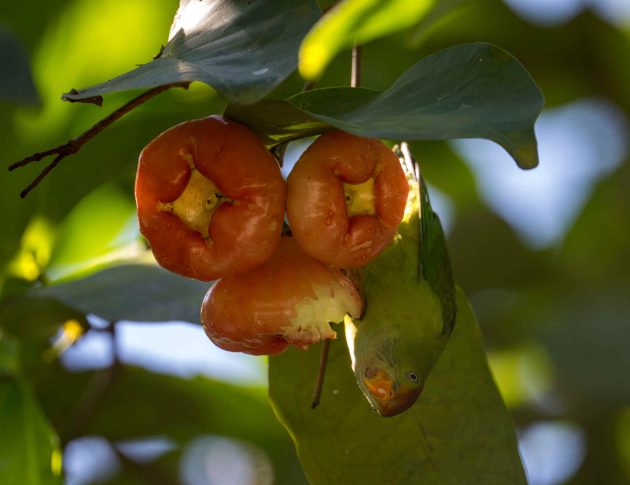
The Sri Lanka Hanging Parrot is also featured in an interesting article on the rarity (or non-rarity) of species. The title gives a summary of the article: “Most Species Are Rare (But Not Very Rare)“.
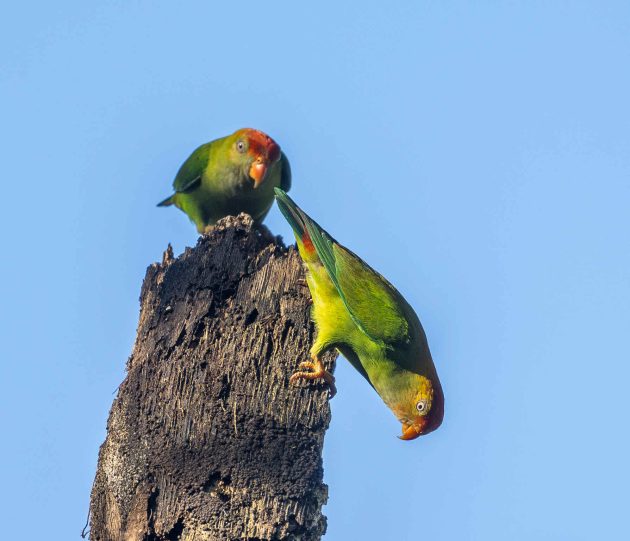
And if you have approximately 40 USD to spare, you may consider buying a work of art showing a Sri Lanka Hanging Parrot. And no, we do not get a commission.
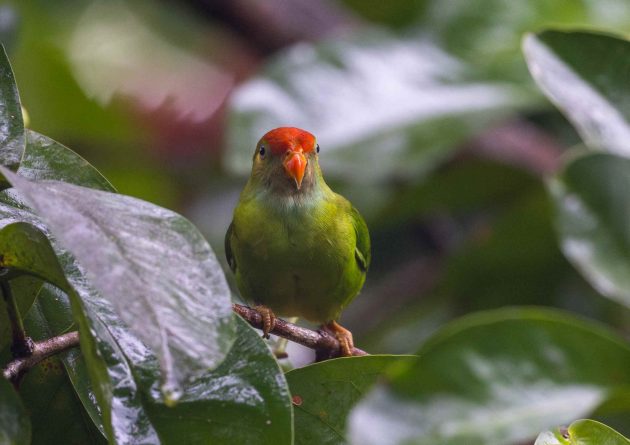
Enough with the money – there are several endemics not featured on Sri Lankan banknotes, maybe because their color does not match the targeted banknote colors (Andy Warhol: “You’d be surprised how many people want to hang an electric chair on their living-room wall. Specially if the background color matches the drapes”).
But there is a consolation prize for Sri Lankan endemics – being featured on a Sri Lanka stamp. Like the Spot-winged Thrush.
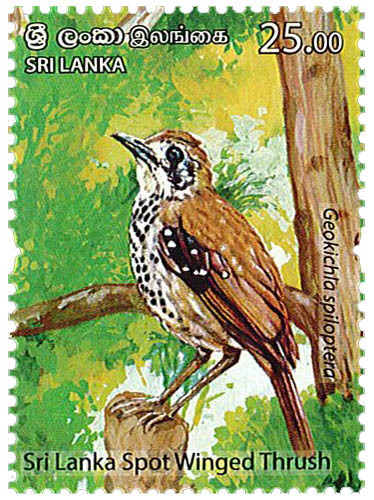
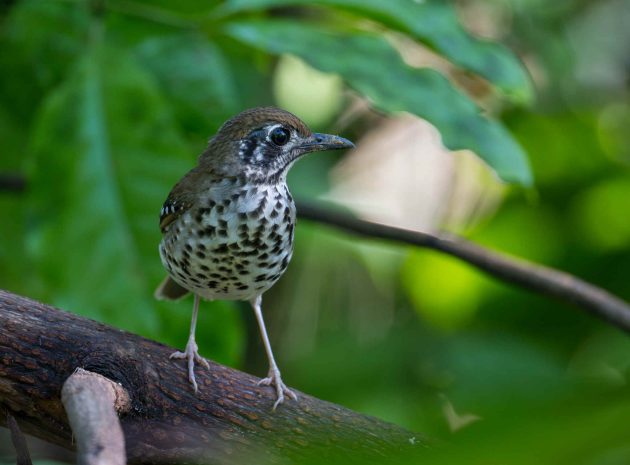
It is highly range-restricted, and listed as Near Threatened.
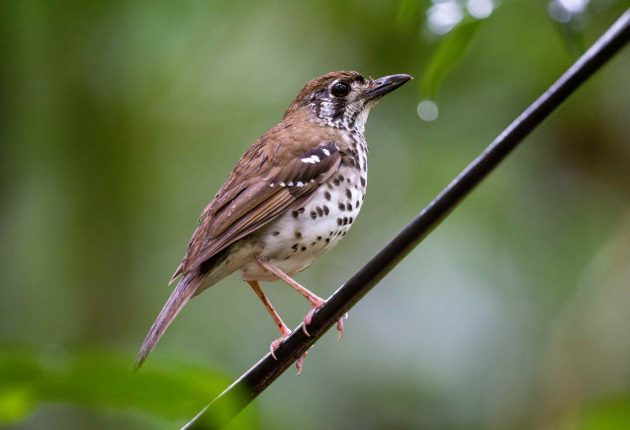
And it looks better in reality than on a stamp.
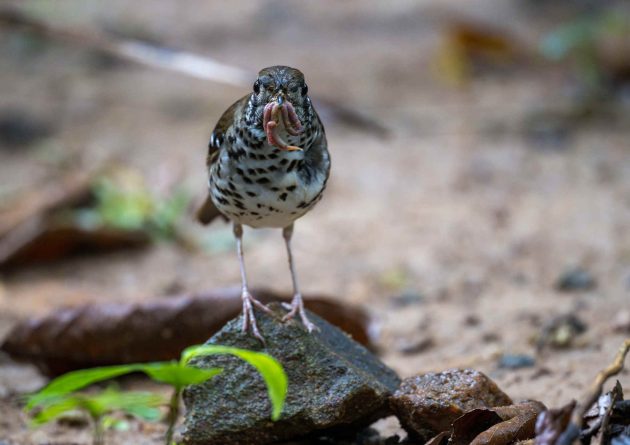
There seem to be quite many Sri Lankan stamps with bird motives – see here for an overview. I have to admit they make for more attractive stamps than the Kithulgala leeches.
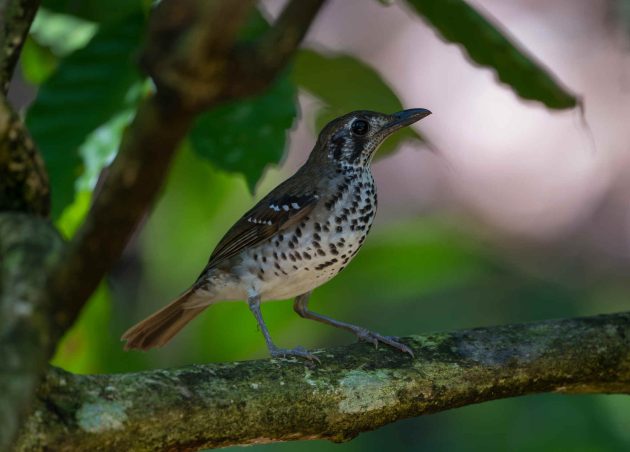
While the Spot-winged Thrush prefers to forage close to forest trails rather than in the forest interior, it does this less if there are disturbances on the trails (i.e., tourists). And these are not even the noisiest of tourists, the Chinese …
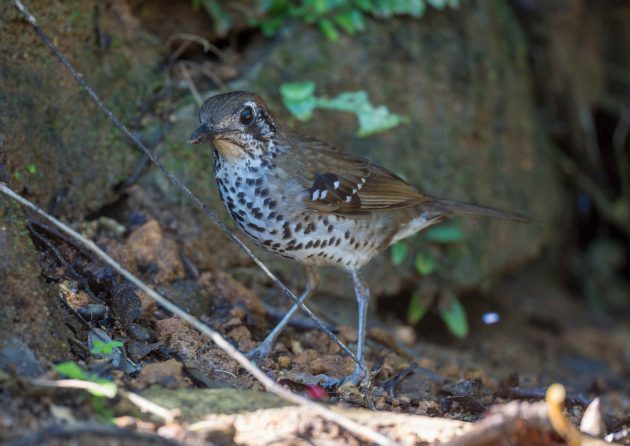
Sri Lanka also has its endemic coucal, which for some reason is not called Sri Lanka Coucal but Green-billed Coucal.
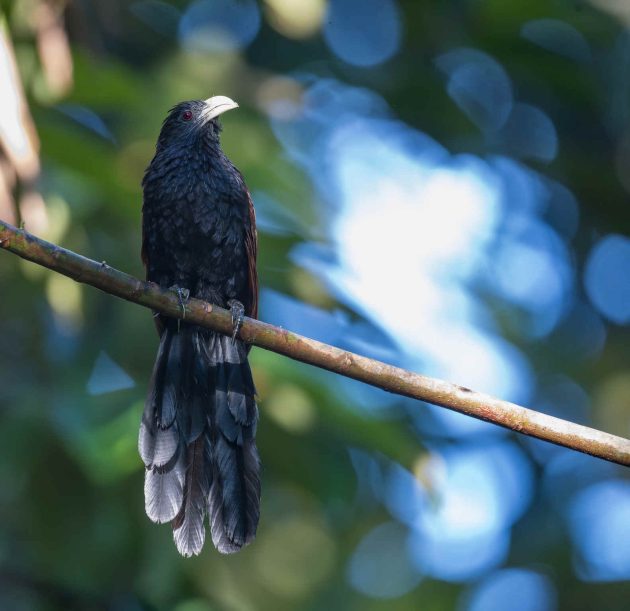
It is now listed as Vulnerable (previously: Endangered) – according to the HBW, it is a “rare, local and declining species, endangered by the continued loss of its forest habitat to agriculture.” Frighteningly, its total population is estimated at no more than a few hundred pairs, according to the HBW, though Datazone gives a figure of 2,500 – 9,999 individuals.
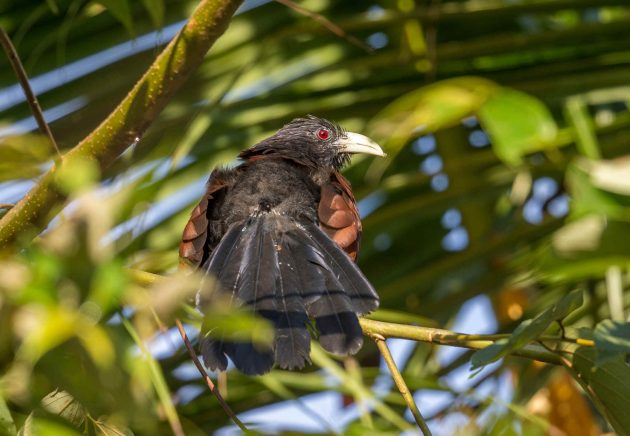
In any case, it is the rarest of Sri Lanka’s endemic species.
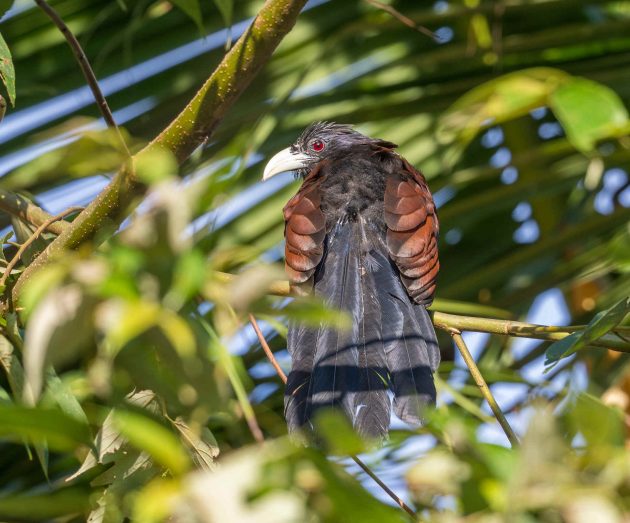
The scientific name, Centropus chlororhynchos, indicates that the bill of the coucal is greenish-yellow (like the chemical element chlorine), which fits better than the common name.
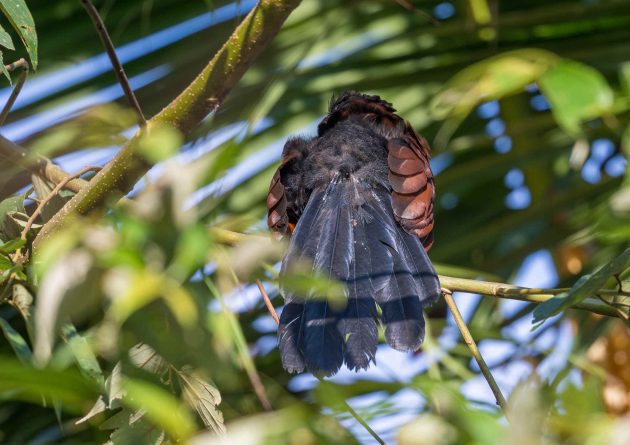
On earthlife, a person named Gordon Ramel (who describes himself as “an ecologist with two degrees from Exeter University”) has a post on the Green-billed Coucal, in which he correctly describes the bill of the species as light green – and then illustrates the post with a photo of a Greater Coucal (with a very black bill). “Will we ever fully trust the Web again?”
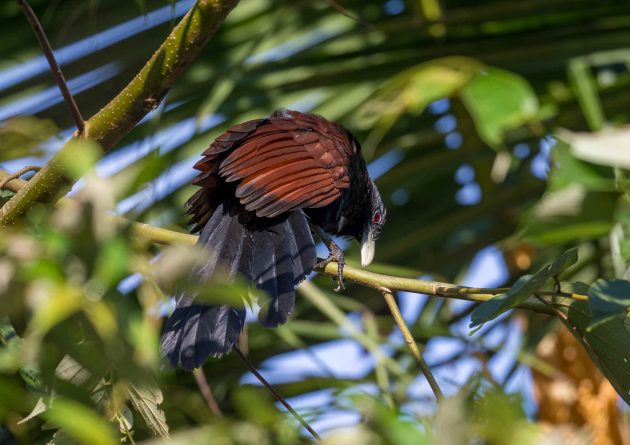
Given that the HBW describes the Black-capped Bulbul as a “Medium-sized, noisy, conspicuous bulbul ” that supposedly is one of the most common forest birds in Sri Lanka, I only saw a few of them.
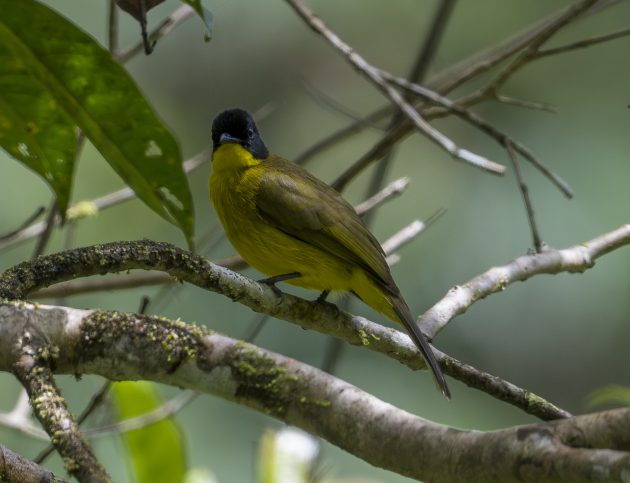
And did not get very convincing photos.
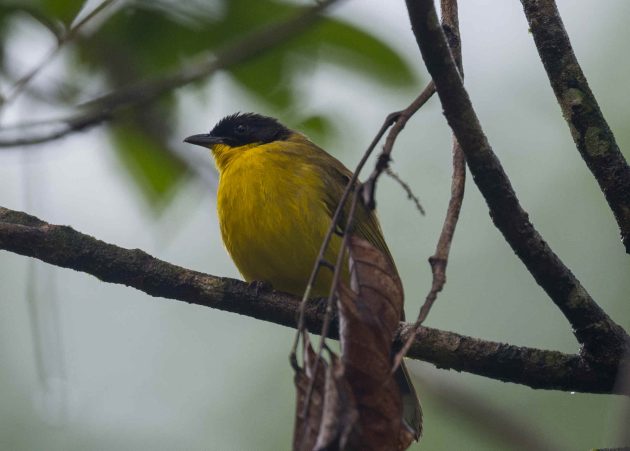
The Brown-capped Babbler apparently is an understory specialist – it gets lost when experimentally released in a rubber plantation (source).
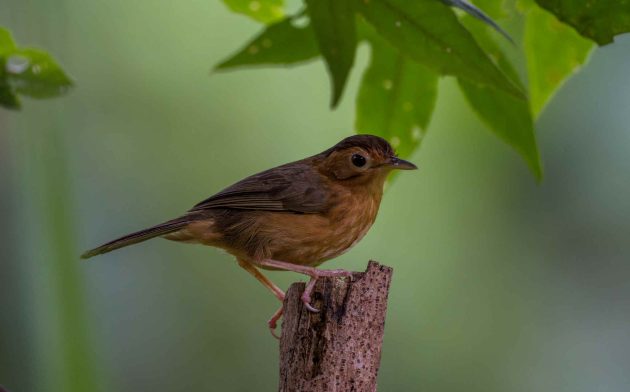
The research also shows that species like this babbler are very sensitive to forest fragmentation, as they do not leave their understory despite having wings.
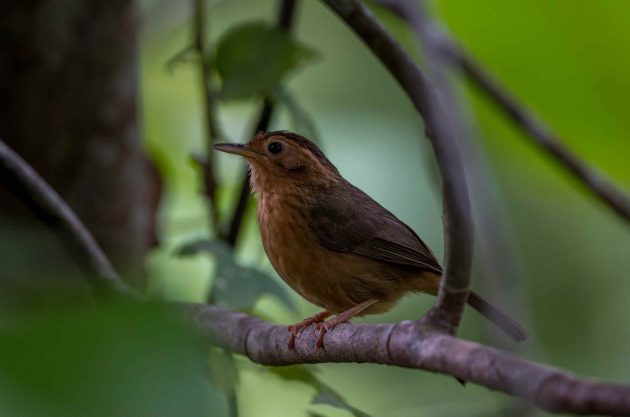
Kithulgala also has one of the two endemic hornbill species of Sri Lanka, the unimaginatively named Sri Lanka Grey Hornbill.
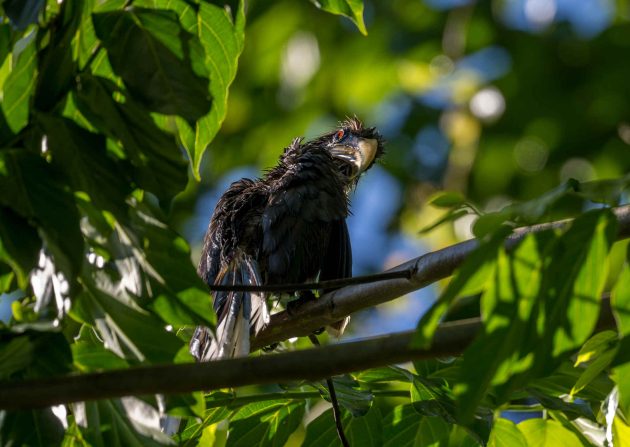
The one I saw must have just taken a bath somewhere …
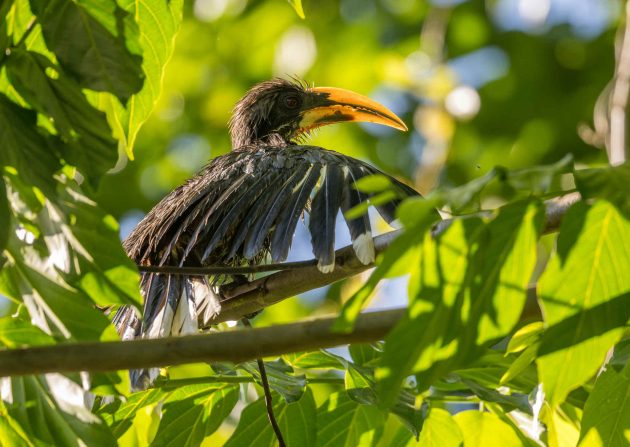
… probably on a break from feeding his partner, which was safely enclosed in a tree hole. The timing was right – according to one paper, nesting starts early in March (the photo was taken on March 18).
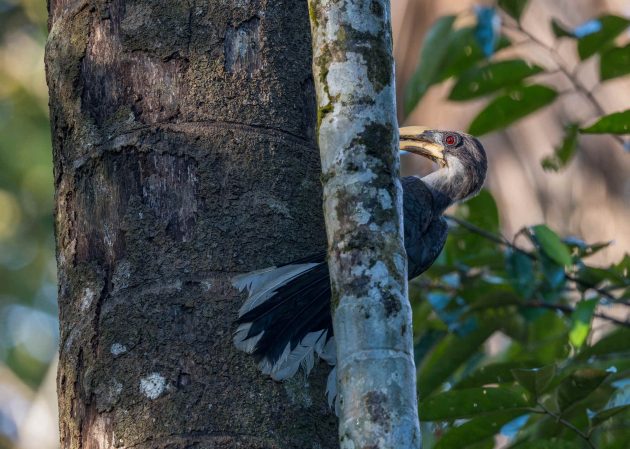
While this nest was in a natural tree, apparently aluminum pots also work …
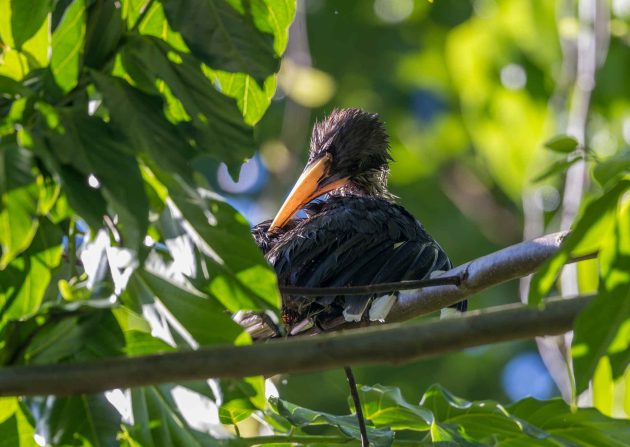
Given that this post is already (too) long, I will only add one non-endemic species seen at Kithulgala: the Malabar Trogon.
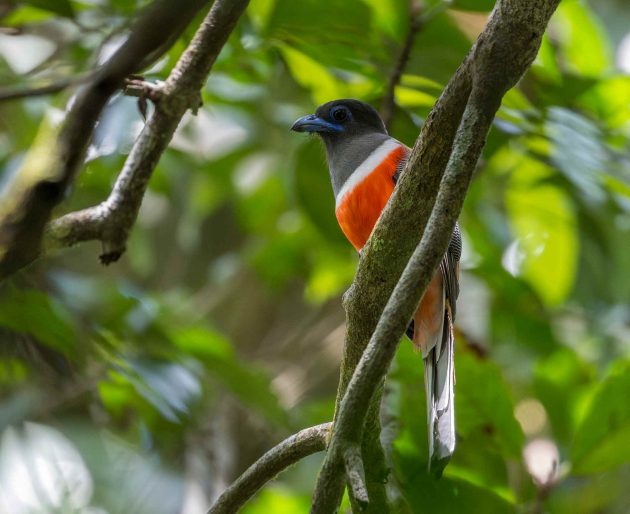
Like many residents of retirement homes, and like other members of the trogon family, it does not move much. That is good for photos, but not great for people taking videos. Glad I did not try.
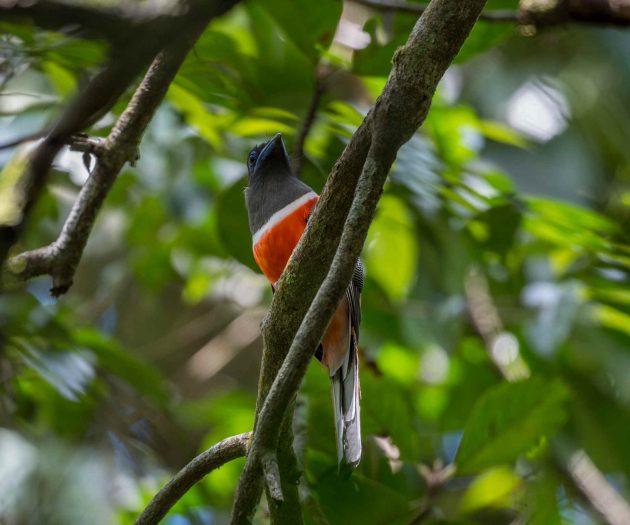
Actually, make that two species. The Orange Minivet just looks too nice.
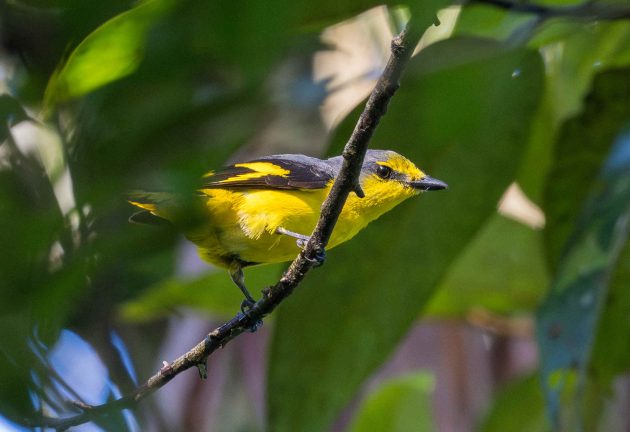
Information on color coding: female yellow, male orange.

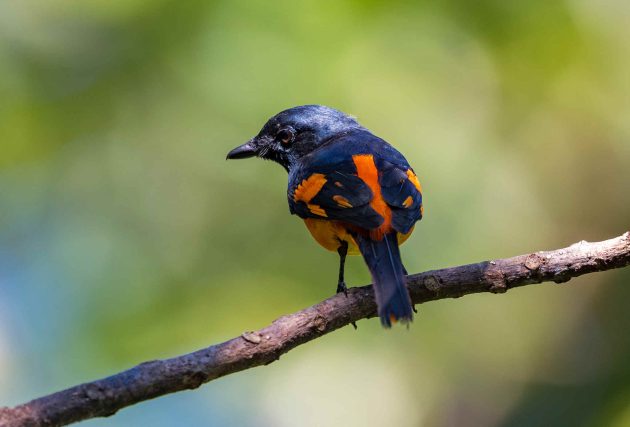
And finally, one weird-looking non-bird.
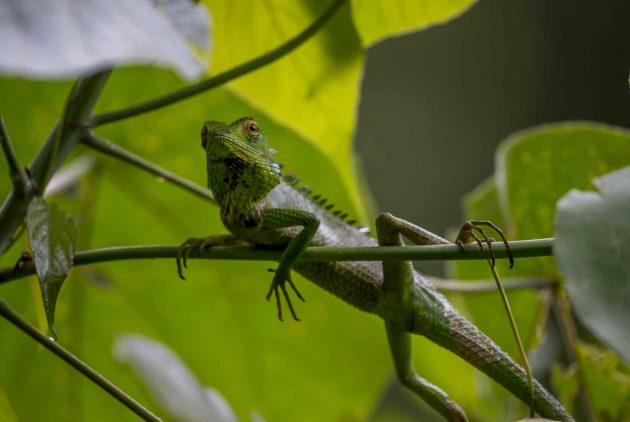
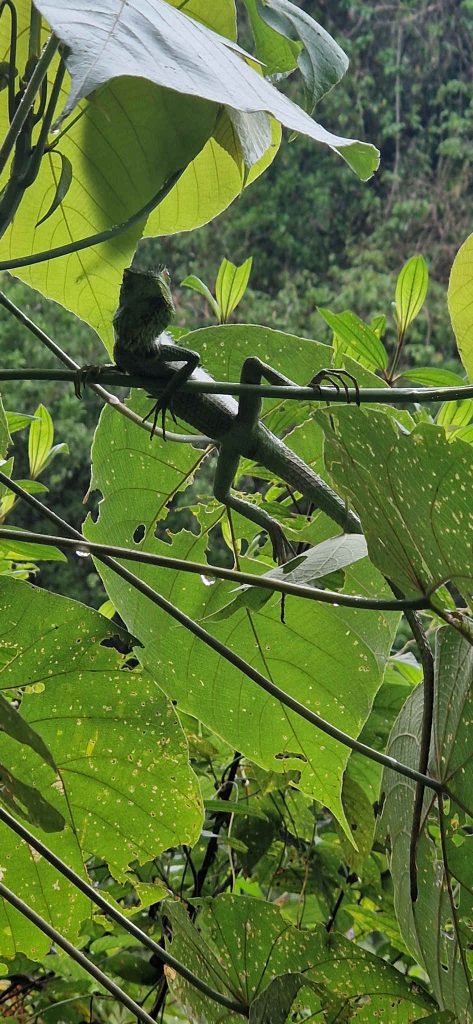























 English (US) ·
English (US) ·  French (CA) ·
French (CA) ·